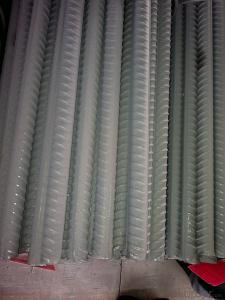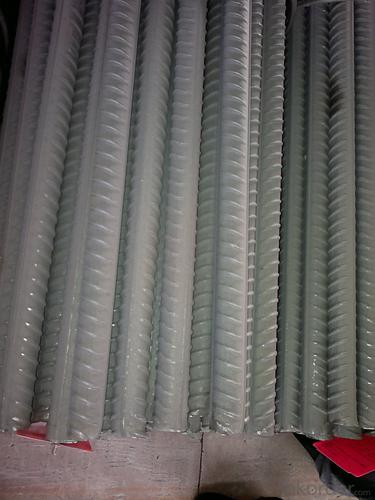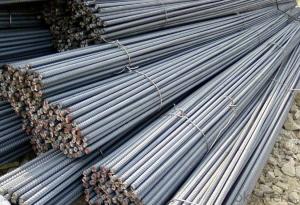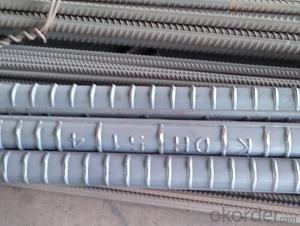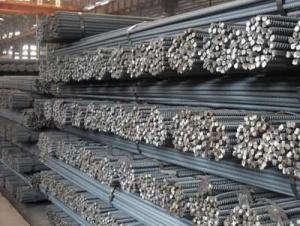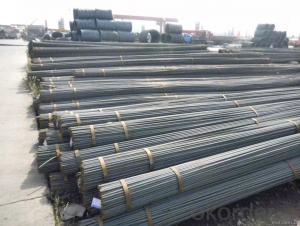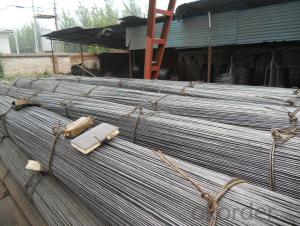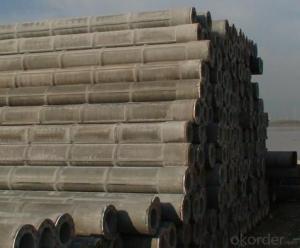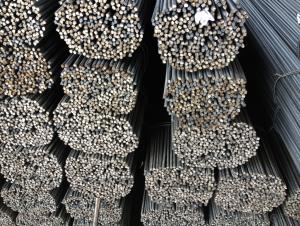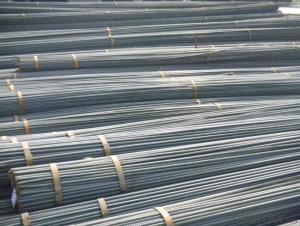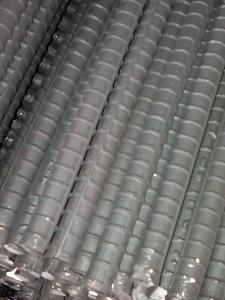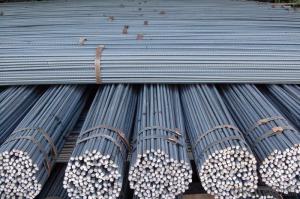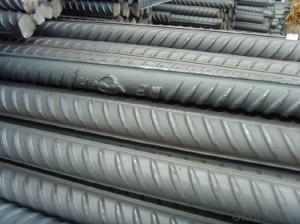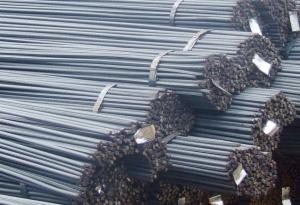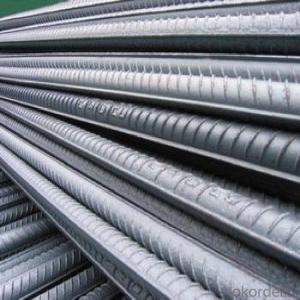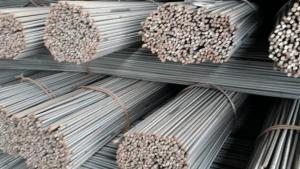Hot rolled deformed steel bars for construction
- Loading Port:
- Tianjin
- Payment Terms:
- TT or LC
- Min Order Qty:
- 25 m.t.
- Supply Capability:
- 100000 m.t./month
OKorder Service Pledge
OKorder Financial Service
You Might Also Like
Product Description:
OKorder is offering Hot rolled deformed steel bars for construction at great prices with worldwide shipping. Our supplier is a world-class manufacturer of steel, with our products utilized the world over. OKorder annually supplies products to European, North American and Asian markets. We provide quotations within 24 hours of receiving an inquiry and guarantee competitive prices.
Product Applications:
Hot rolled deformed steel bars are ideal for structural applications and are widely used in the construction of buildings and bridges, and the manufacturing, petrochemical, and transportation industries.
Product Advantages:
OKorder's deformed steel bars are durable, strong, and resist corrosion.
Main Product Features:
· Premium quality
· Prompt delivery & seaworthy packing (30 days after receiving deposit)
· Corrosion resistance
· Can be recycled and reused
· Mill test certification
· Professional Service
· Competitive pricing
Deformed bar is widely used in buildings, bridges, roads and other engineering construction. Big to highways, railways, bridges, culverts, tunnels, public facilities such as flood control, dam, small to housing construction, beam, column, wall and the foundation of the plate, deformed bar is an integral structure material. With the development of world economy and the vigorous development of infrastructure construction, real estate, the demand for deformed bar will be larger and larger..
Packaging & Delivery of HRB400 Deformed Steel Bar:
Packaging Detail: products are packed in bundle and then shipped by container or bulk vessel, deformed bar is usually naked strapping delivery, when storing, please pay attention to moisture proof. The performance of rust will produce adverse effect.
Each bundle weight: 2-3MT, or as required
Payment term: TT or L/C
Delivery Detail: within 45 days after received advanced payment or LC.
Label: to be specified by customer, generally, each bundle has 1-2 labels
Trade terms: FOB, CFR, CIF
Deformed Steel Bar in container
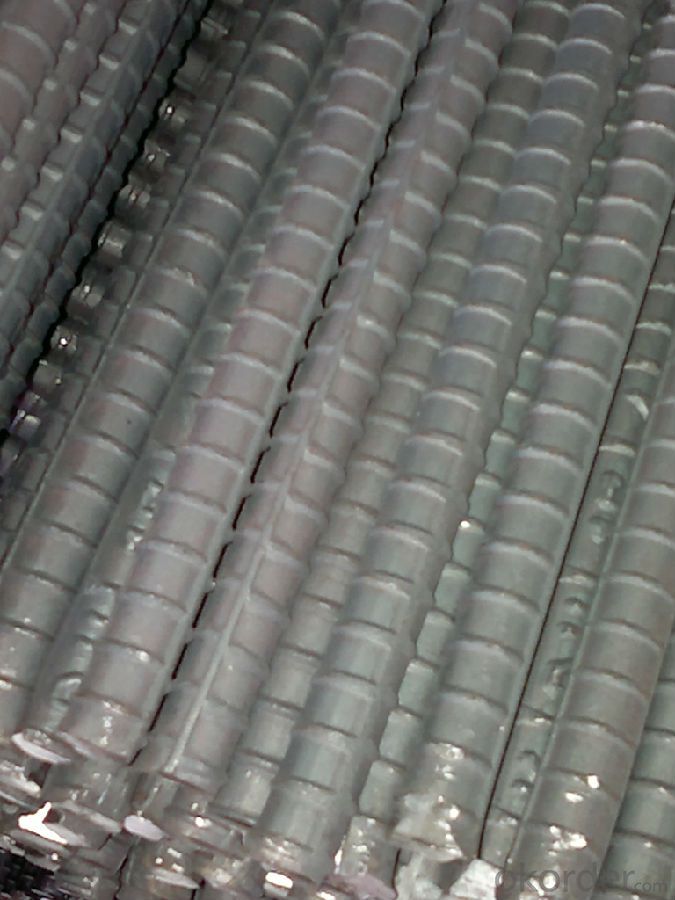
Deformed Steel Bar in factory
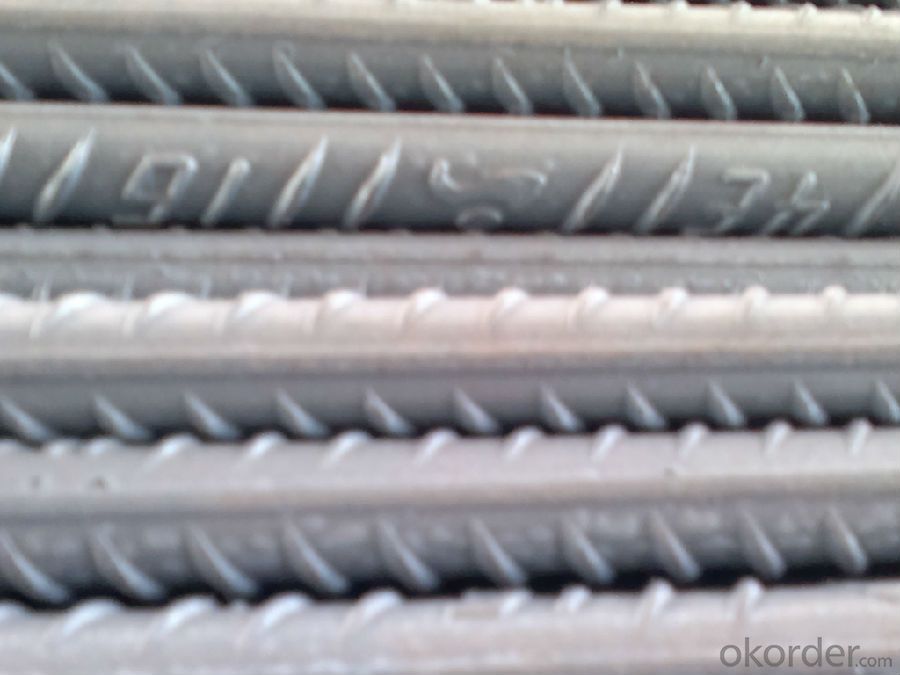
Note:
1. Our products are produced according to national standard (GB), if not, supply according to national standards (GB) or agreement as customer required.
2. Other Grade and Standard Deformed Steel Bar we can supply:
Grade: GR40/GR60, G460B/B500A/B500B/B500C,BST500S
Standard: ASTM, BS, DIN
The Minimum Order Quantity of these products is high, and need to be confirmed.
3. We can not only supply Deformed Steel Bar; if you need anything about building materials, please contact us for further information.
4. Please send us your detail specifications when inquire. We will reply to you as soon as possible. We sincerely hope we can establish a long stable business relationship.
FAQ:
Q1: How do we guarantee the quality of our products?
A1: We have established an advanced quality management system which conducts strict quality tests at every step, from raw materials to the final product. At the same time, we provide extensive follow-up service assurances as required.
Q2: How soon can we receive the product after purchase?
A2: Within three days of placing an order, we will begin production. The specific shipping date is dependent upon international and government factors, but is typically 7 to 10 workdays.
- Q: How are steel rebars measured and cut on construction sites?
- Steel rebars are typically measured and cut on construction sites using a variety of tools and techniques. Firstly, rebars are measured using measuring tapes or rulers to ensure they meet the required length specifications. Once the measurements are taken, rebars are cut using specialized tools such as rebar cutters, rebar benders, or hacksaws. Some construction sites may also use portable hydraulic shears or electric rebar cutting machines for larger projects. These tools allow precise and efficient cutting of steel rebars to the desired lengths, ensuring they fit properly in the construction project.
- Q: How do steel rebars help in preventing cracks in concrete?
- The reinforcement of steel rebars is essential for preventing cracks in concrete and adding strength to the structure. Concrete is strong in compression but weak in tension, meaning it can withstand forces that push or compress it, but it is prone to cracking under pulling or bending forces. To counteract this weakness, steel rebars are embedded within the concrete. They act as a framework, distributing tensile forces evenly throughout the material and preventing the formation and spread of cracks. Additionally, rebars reinforce the structure, increasing its resistance to bending, shearing, and external forces. Furthermore, steel rebars enhance the overall structural integrity of the concrete, thus preventing cracks. During the drying and curing process, concrete tends to shrink and crack. However, with the presence of rebars, the tensile forces caused by shrinkage are absorbed by the steel, reducing or eliminating the formation of cracks. Moreover, steel rebars provide resistance against temperature changes and external loads, which also helps prevent cracks in concrete. They control the expansion and contraction of the material due to temperature fluctuations, minimizing the risk of cracking. Additionally, rebars reinforce the concrete against heavy loads, such as those from traffic or seismic activity, ensuring the structure remains intact and free from cracks. In conclusion, steel rebars are crucial in preventing cracks in concrete by reinforcing the material, distributing forces, absorbing tensile stresses, and enhancing structural integrity. Their presence significantly improves the durability and longevity of concrete structures, making them more resistant to cracking and ensuring their stability over time.
- Q: What are steel rebars made of?
- Steel rebars are made of carbon steel, which is an alloy of iron and carbon.
- Q: What are the challenges associated with the installation of steel rebars?
- Some of the challenges associated with the installation of steel rebars include the difficulty in handling and positioning heavy steel bars, ensuring accurate placement and alignment, the need for skilled labor and expertise, managing reinforcement congestion in complex structural elements, and addressing potential corrosion issues. Additionally, coordination between different trades and adherence to safety protocols are crucial during the installation process.
- Q: How are steel rebars tested for tensile strength?
- Steel rebars are tested for tensile strength through a process called tensile testing, where a sample of the rebar is subjected to an applied force until it breaks. The force applied is gradually increased, and the corresponding elongation and load values are recorded. This allows for the determination of the maximum force the rebar can withstand before failure, providing a measure of its tensile strength.
- Q: How are steel rebars cut and bent on-site?
- Steel rebars are cut and bent on-site using specialized tools and equipment. The process typically involves the following steps: 1. Measurement: The rebars are measured according to the required length and dimensions specified in the construction plans. This is crucial to ensure accuracy and precision in the bending and cutting process. 2. Cutting: Rebars can be cut using different tools such as manual rebar cutters, hydraulic shears, or portable electric cutters. These tools are designed to provide clean and precise cuts without causing damage to the rebars. The rebars are positioned securely, and the cutting tool is applied to the marked area, resulting in the desired length. 3. Bending: Once the rebars are cut to the required length, they are bent using rebar benders. These machines have various attachments and rollers that can shape the rebars according to the desired angle and radius. The rebars are carefully positioned and secured in the bender, and the machine exerts force to bend them to the specified shape. 4. Quality control: After cutting and bending, the rebars undergo quality control checks to ensure they meet the required specifications. This may involve visual inspections, measurements, and testing to verify the accuracy of the dimensions and the quality of the cuts and bends. It is important to note that skilled workers, such as ironworkers or steel fixers, are typically responsible for the on-site cutting and bending of rebars. They have the expertise to interpret construction plans, use the appropriate tools, and ensure that the rebars are cut and bent accurately to meet the project's needs.
- Q: How are steel rebars different from steel mesh?
- Steel rebars and steel mesh are both reinforcing materials used in construction, but they differ in terms of their shape, size, and application. Steel rebars are long, cylindrical bars typically made of carbon steel and are used to provide tensile strength and stability to concrete structures, such as beams, columns, and foundations. On the other hand, steel mesh consists of a grid-like pattern of interconnected steel wires and is used primarily to reinforce concrete slabs, walls, and other flat surfaces. While rebars are primarily used to resist tension, steel mesh distributes loads evenly and helps prevent cracking and shrinkage in concrete.
- Q: Are steel rebars suitable for use in high-traffic areas like bridges?
- Yes, steel rebars are suitable for use in high-traffic areas like bridges. Steel rebars provide exceptional strength and durability, making them ideal for withstanding heavy loads and frequent use. Additionally, steel rebars offer excellent resistance to corrosion, ensuring the longevity and structural integrity of bridges in high-traffic areas.
- Q: Does the grade three thread steel with "E" have the same information price as the ordinary three grade thread steel? Is there a big difference?
- Hello, with E thread steel is seismic rebar, without E is the common thread steel, general seismic thread with E was higher than that of ordinary steel prices, the price difference between 50 and 100 yuan, according to the specific market situation.
- Q: What is the typical lead time for ordering steel rebars?
- The typical lead time for ordering steel rebars can vary depending on factors such as the quantity required, supplier availability, and current market conditions. However, it is common for lead times to range from a few days to several weeks, with larger orders often requiring more time for production and delivery. It is always advisable to consult with the specific supplier or manufacturer to get an accurate estimate of the lead time for ordering steel rebars.
Send your message to us
Hot rolled deformed steel bars for construction
- Loading Port:
- Tianjin
- Payment Terms:
- TT or LC
- Min Order Qty:
- 25 m.t.
- Supply Capability:
- 100000 m.t./month
OKorder Service Pledge
OKorder Financial Service
Similar products
Hot products
Hot Searches
Related keywords
